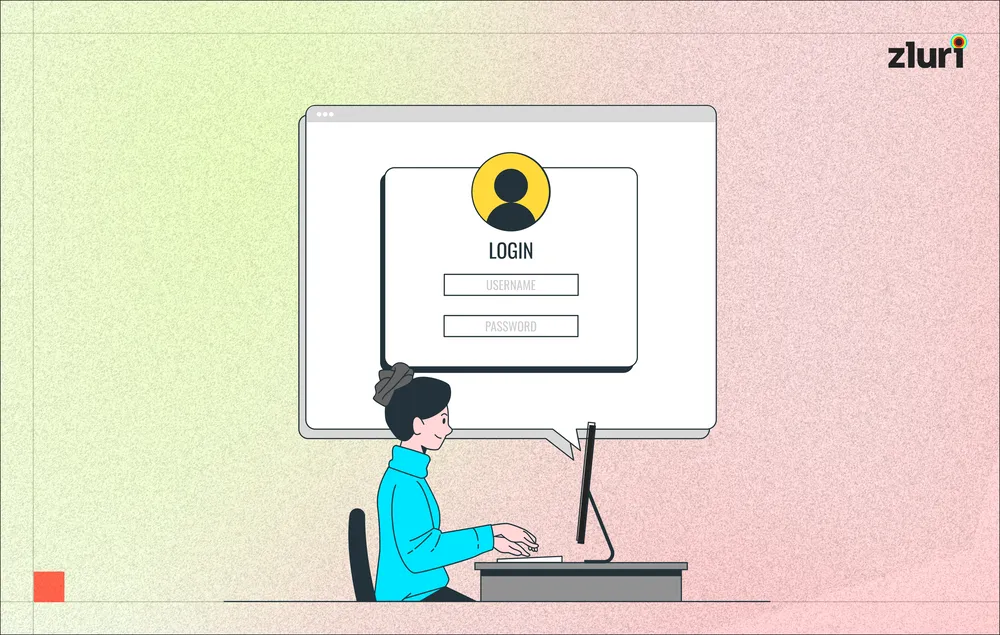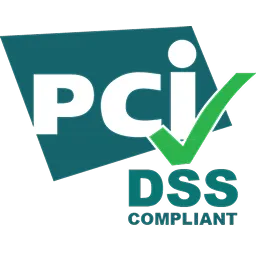Don't risk your business's reputation and finances with GDPR violations. Even without a physical presence in the EU, if your website gathers data from EU visitors, GDPR compliance is crucial. Our 8-step GDPR Checklist ensures you stay ahead and safeguard your company from potential non-compliance pitfalls.
The General Data Protection Regulation (GDPR) is a security law that governs how organizations handle personal data. Any company operating in the EU or dealing with data from EU residents must adhere to GDPR rules. But why is compliance with GDPR crucial?
Why Is It Important To Comply With GDPR?
Compliance with the General Data Protection Regulation (GDPR) is crucial for several reasons:
- Legal Obligation: The GDPR is a legal requirement introduced by the European Commission to protect the data privacy of EU citizens. If you fail to comply or violate GDPR, you may face heavy fines and legal consequences.
- Global Impact: GDPR applies not only to companies within the EU but also to those outside the EU that process the data of EU citizens. So, compliance with GDPR ensures that you can continue to operate in the EU market without facing regulatory hurdles.
- Data Security and Protection: Implementing GDPR requirements involves establishing robust data security measures and protocols. This reduces the risk of data breaches and protects your customers' sensitive information and your company's valuable data assets.
- Competitive Advantage: GDPR compliance can be a competitive differentiator. Because customers are more concerned about data privacy, they are more likely to choose organizations that prioritize and protect their personal information.
Now that you have understood the importance of adhering to this stringent regulation, it's crucial to be aware that complying with GDPR is not easy.
But why? To successfully achieve GDPR compliance, you must fulfill different data protection requirements and undergo various audits to validate your adherence to these standards. Due to this complexity, organizations often find themselves confused about where to start and what to do.
Fortunately, the GDPR compliance checklist comes into the picture to provide you with clarity. What is the GDPR compliance checklist? This checklist acts as a roadmap that provides clear guidance on how you can meet the regulatory requirements set forth by GDPR. It eliminates confusion and directs you on what steps to take throughout the compliance journey to achieve GDPR compliance.
But what is included in this compliance checklist? Let's explore.
8-Step Checklist For GDPR Compliance
Below, we've mentioned 8 essential steps that are included in the GDPR checklist. By diligently following these steps, your organization can successfully achieve GDPR compliance:
1: Familiarize Yourself with the Data Your Organization Holds
The first step is to thoroughly examine your data through a process known as a Records of Processing Activities (RoPA) audit. This involves identifying what kinds of personal data you gather, why you collect it, and how long you keep it.
This audit reveals how personal data enters, circulates, and leaves your organization and helps pinpoint areas where compliance might be lacking.
Moreover, the audit also categorizes the types of personal data you handle. This includes sensitive data like health records or biometric information, which demand extra precautions under GDPR. By recognizing these different data categories, you can tailor your compliance efforts accordingly, ensuring that each type receives the appropriate level of protection and attention.
Additionally, to ensure you gain a complete understanding of the data your organization deals with, consider answering the below questions:
- What kind of personal data do you have?
- Does this data include sensitive information, and if so, how do you protect it?
- Does your website collect data from minors (under 16 years old)?
- Why does your website need this data?
- How did you get explicit consent to use this data?
- Where is this data stored?
- Who can access it?
- Do any third parties have access to this data, and if yes, how do you control their use of it?
- Are these third parties located outside the European Economic Area (EEA), and if so, what measures are in place to protect the data?
- How long do you need to keep this data, and can any of it be deleted or anonymized?
2: Appoint A Data Protection Officer (DPO)
You need to appoint a Data Protection Officer (DPO) to oversee whether your data protection strategies serve their intended purpose. If not, the DPO can help your team make necessary changes to enhance their effectiveness.
That's not all; DPO also takes on other responsibilities as well such as:
- Providing precise guidance on data protection impact assessments.
- Serving as the main contact person for all inquiries related to data processing.
- Acting as the central intermediary between the company and GDPR regulators.
- Assesses the potential risks associated with different processing operations.
Moreover, under GDPR guidelines, it is mandatory to appoint a DPO in the following circumstances:
- If your organization is a public authority
- If your organization conducts regular and systematic monitoring of large-scale data
- If your organization processes significant volumes of sensitive data, such as health records or information concerning criminal convictions
Note: You can either appoint an internal DPO or opt for an external one. However, if you choose to designate a DPO internally, they may require additional training to fully understand GDPR regulations and effectively fulfill their role responsibilities.
3: Set Rules for Data Sharing & Transfer
You need to set rules for sharing personal data with other entities, whether located within or outside the European Economic Area (EEA). You can also use formal data processing agreements to manage relationships with processors. These agreements outline all parties' privacy rights and responsibilities in compliance with the GDPR.
So, controllers need to adhere to formal data processing agreements when sharing personal data with processors and other third parties. These agreements specify that processors can only process data according to the controller's instructions and are prohibited from using it for their own purposes. Additionally, processors must obtain user consent from the controller before sharing data with sub-processors.
Note:
- Controller: Think of the controller as the one in charge. They decide why and how personal data is collected and used. For example, if you sign up for a service online, the company you're signing up with is the controller because they decide what information they need from you and how they'll use it.
- Processor: The processor is like a helper. They handle the personal data on behalf of the controller. For instance, if the company you signed up with hires another company to handle their customer data, that other company is the processor. They do what the controller tells them to do with the data.
Furthermore, if your business involves transferring personal data from the EU to non-EU nations, it's essential to perform the following tasks:
- Conducted appropriate risk assessments before the data transfer.
- Evaluate whether the recipient country has an adequate data protection framework or not.
- Before transferring the data, establish all required agreements with the recipient company.
4: Conduct Data Protection Impact Assessment (DPIA)
Conducting a DPIA (Data Protection Impact Assessment) is essential to assess how a planned data processing activity can impact individuals' privacy. This assessment helps proactively identify and manage data privacy risks.
Moreover, it's also crucial to conduct a DPIA while introducing a new data processing activity that could significantly jeopardize users' data privacy. But what aspects does this assessment evaluate in a data processing activity? It examines the following aspects:
- The nature, extent, context, and objectives of the data processing activity.
- The potential risks to individuals' rights.
- The measures in place to mitigate these risks.
- The adequacy and efficiency of these measures.
You need to note that the DPIA process requires careful attention, so you need to allocate adequate resources (workforce and tools)and time to conduct a thorough assessment. This will further help your team gain awareness of privacy risks associated with personal data processing activities, and accordingly, they can implement necessary measures to address them.
5: Notify The Affected Individual Or Entity About The Data Breach
Under the GDPR, cloud-based companies must report specific data breaches to the ICO (Information Commissioner's Office) and sometimes to the affected people. A breach could harm people's rights or cause financial loss, reputation damage, confidentiality loss, or discrimination.
You must inform the relevant supervisory authority within 72 hours of discovering a personal data breach. If the breach could seriously affect people's rights, you must inform them immediately.
6: Ensure Your Privacy Policy Remains Up-to-date
Your Privacy Policy should be updated regularly. Whenever the policy changes, you need to make sure all clients (whoever has data you are dealing with) receive an updated Privacy Notice via email.
7: Embrace a Data Privacy & Protection Focused Approach
This is one of the most crucial steps in the GDPR checklist, in which you need to adopt a \"privacy & protection by design\" approach. Under this approach, your team needs to perform the following tasks:
- Utilize pseudonymization or anonymization techniques to encrypt data, as recommended by the GDPR, to safeguard sensitive information.
- Regularly remove unnecessary data from your systems to minimize the volume of data requiring protection (including deleting obsolete data from backups).
- Ensure that your data centers are located in regions with robust data security standards, such as the US or Europe.
- Implement IT security measures like two-factor authentication for employees and secure TLS/SSL certificates to safeguard data transmission.
- Encrypt system passwords and secure employee devices used for work to prevent unauthorized access.
- Conduct routine vulnerability scans on devices, systems, and networks to detect and address potential security gaps or vulnerabilities promptly.
8: Create A GDPR Data Register
A GDPR data register, or a GDPR diary, is a detailed record of how an organization follows GDPR rules. But why is it important to create a data register? Below are some reasons why you need to maintain a GDPR data register:
- Documentation Requirements: The GDPR mandates that organizations maintain comprehensive documentation of their data processing activities.
Creating a data register ensures that you fulfill this requirement by systematically recording all relevant information about the personal data you process, the purposes for processing it, and the categories of individuals involved. - Transparency and Accountability: A clear and detailed record of your data processing activities promotes transparency. It enables you to demonstrate accountability by showing regulators and other stakeholders how you handle personal data according to GDPR principles.
- Audit Preparation: In the event of an audit, you can present the GDPR data register as evidence of your organization's compliance efforts (data processing practices).
Note: You need to regularly review your data register to ensure it remains up-to-date and accurately reflects your data processing activities.
After reviewing the compliance checklist, you may have realized that complying with GDPR is complex and time-consuming. However, implementing an automated access review solution can streamline and simplify the compliance process. One such solution that will help manage the compliance process with ease is Zluri. What is Zluri? How does it work?
Seamlessly Comply With GDPR With Zluri
Zluri offers an access review solution that enables your team to automate the certification process easily. By automating this process, you can significantly minimize the time and effort required for certification, allowing your team to focus on other critical tasks and responsibilities.
How does it work? Here's how:
Enables Your Team To Create Automated Workflows
With Zluri's access review, your team can create access review workflows, which allows them to verify who has access to what within the organization.
Further, these workflows can help your team trigger actions to restrict or revoke access if anyone holds unauthorized permissions.
But how does this help comply with GDPR?
Conducts Periodic Reviews
Zluri Access Review conducts periodic access reviews, which enables your team to pinpoint which individual holds excessive or unnecessary access to crucial data. This further helps them to promptly adjust employees' access permissions to what's necessary and nothing beyond.
Further, this proactive strategy enhances data security by mitigating potential security breaches and vulnerabilities.
Strengthens Security Posture
Zluri's access review further enforces access controls such as role-based access control, just-in-time access, the principle of least privilege, and more to add an extra layer of security. This helps ensure that only authorized employees have the right access permissions to required SaaS apps and critical data. This helps minimize the risk of unauthorized access and creates a well-governed access environment.
Documents The Review Process
That's not all. Zluri's access review also enables your team to document the entire access review process and record what measures were taken to safeguard data from unauthorized access (like restricting employees' access rights to what's necessary). This helps demonstrate that your organization has effective controls to maintain data integrity, which fulfills the requirements outlined by GDPR compliance.
To learn more about Zluri's access review, book a demo now.
GDPR Checklist: Your Roadmap To Successfully Comply With GDPR
In conclusion, a GDPR Checklist acts as a guide for your compliance journey. It outlines all the necessary steps to fulfill the GDPR requirements, like updating the privacy policy, setting rules for data sharing and transfer, and more. By adhering to this checklist for GDPR compliance, your organization can achieve compliance without failure. Furthermore, to help simplify the compliance process even more, advanced solutions like Zluri's access review offer added support and efficiency.
FAQs
1: What Are The Key Components Of GDPR?
GDPR includes four key components
- Data protection principles
- Rights of data subjects
- Legal grounds for data processing
- Roles and duties of data controllers and processors
2: What Are The Requirements Of GDPR?
To comply with GDPR, your organization needs to fulfill the following requirements:
- Conduct lawful, fair, and transparent data processing.
- Limit data usage for legitimate purposes.
- Minimize the collection and storage of personal data.
- Ensure the accuracy of the data collected.
- Set a limit on how long you can keep the data (storage limitation).
- Safeguard the integrity and confidentiality of personal data.
3: Who Does GDPR Apply To?
GDPR applies to the following entities:
- Data Controllers are the organizations or individuals who determine how and why personal data is processed. They are responsible for ensuring compliance with GDPR during data processing.
- Data Processors: Entities processing personal data on behalf of data controllers. They must adhere to GDPR and implement suitable security measures to safeguard data.
- Data Subjects: GDPR focuses on safeguarding the rights and privacy of individuals, known as data subjects. Anyone whose personal data is collected and processed by an organization falls within GDPR's scope.






.png)


.svg)














